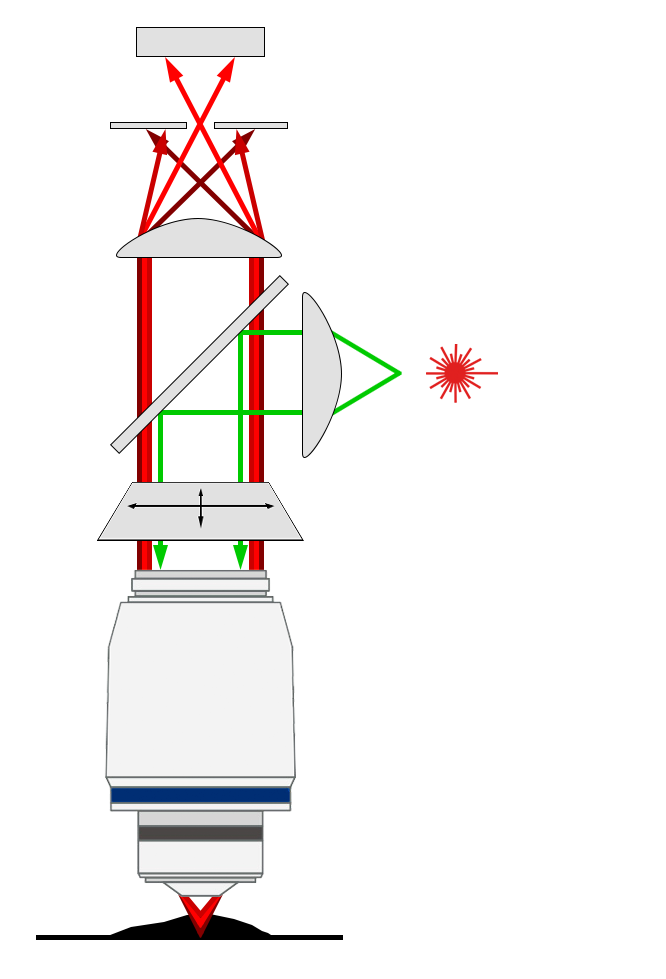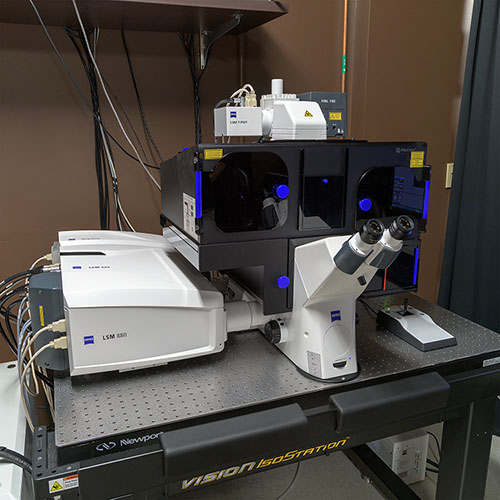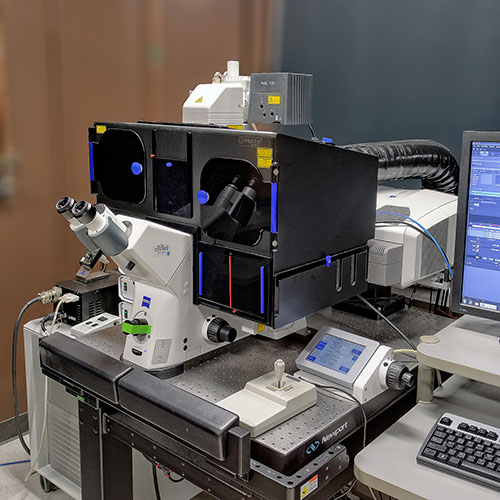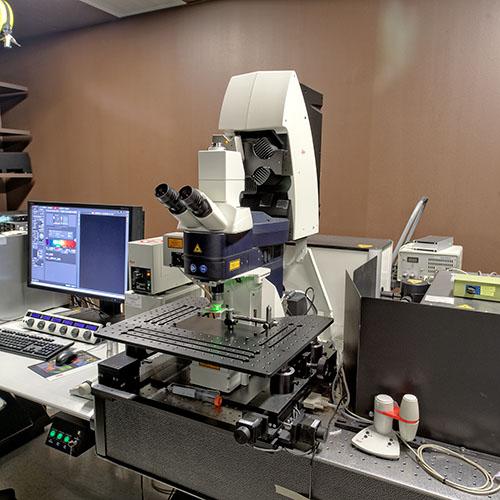Confocal Microscopy
Confocal microscopy is an optical sectioning technique that utilizes fluorescence to generate a high resolution / high contrast image compared to traditional epi-fluorescence. These systems use a laser excitation source to illuminate the specimen in a single location (corresponds to a single pixel in a digital image). The emission from the fluorescence passes through a pinhole located in a conjugated focal plane that blocks signal from areas outside the plane of focus. The laser is then raster-scanned over the entire field of view, while fluorescence emission is recorded for a small axial volume at each location.
This technique leads to a significant improvement in axial resolution as well as contrast of the final image. Our confocal microscopes can be used to image a diverse range of biological specimens at sub-micron resolution. Most of our microscopes are equipped with incubation chambers that allow the regulation of temperature and CO² for live cell imaging over long periods of time.
For a more comprehensive discussion of how confocal microscopy can benefit your research, please see our ‘Introduction to Confocal Microscopy’ video below.
For a list of the confocal microscopes available in the OiVM Core, please see our links below.






